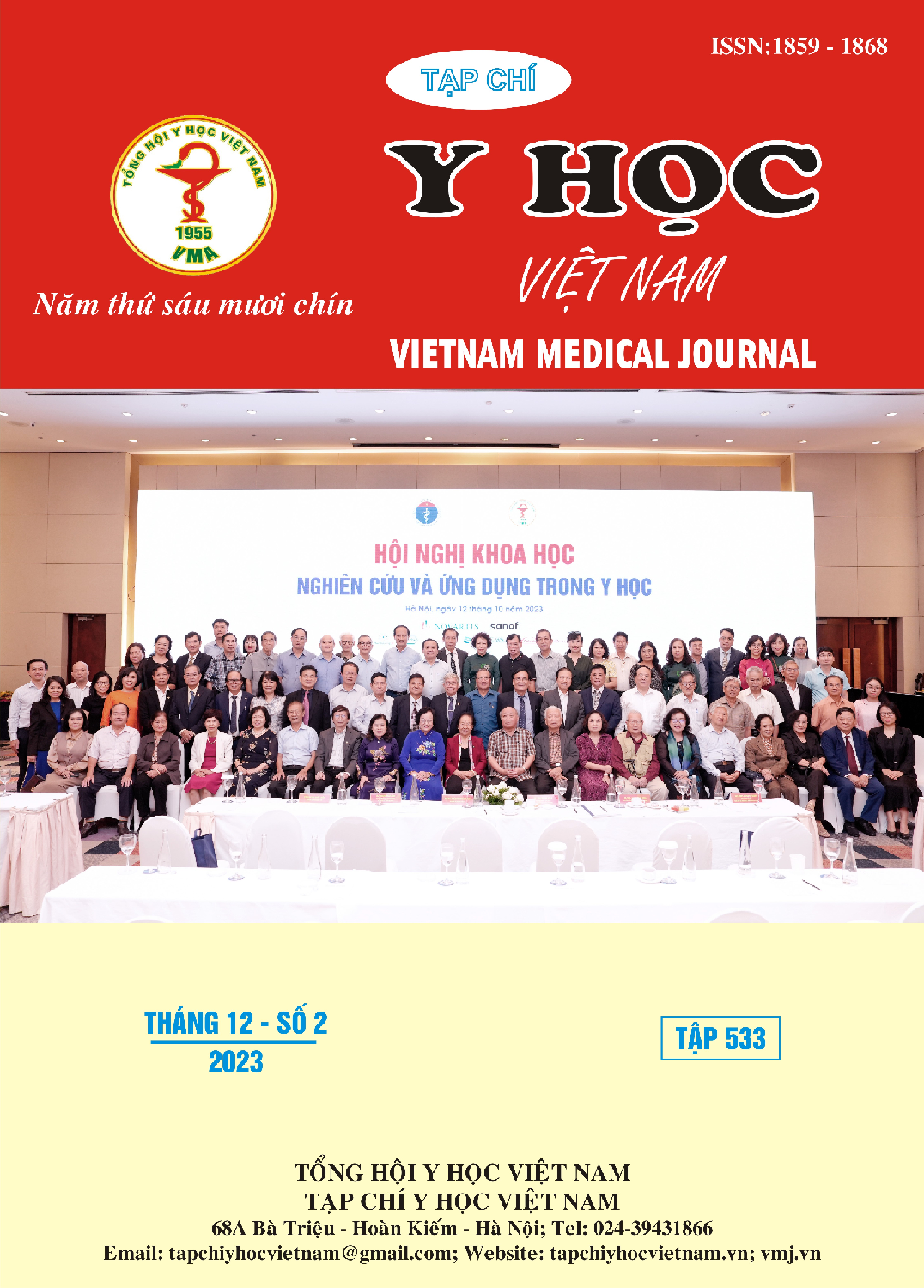ĐÁNH GIÁ BIẾN CHỨNG CỦA PHẪU THUẬT TẠO HÌNH KHUYẾT SỌ BẰNG 3D TITANIUM: TỶ LỆ VÀ CÁC YẾU TỐ LIÊN QUAN
Nội dung chính của bài viết
Tóm tắt
Mục tiêu: Đánh giá các biến chứng của phẫu thuật tạo hình khuyết sọ bằng 3D Titanium và xác định một số yếu tố nguy cơ có liên quan đến các biến chứng này. Đối tượng và phương pháp: Nghiên cứu hồi cứu 44 bệnh nhân được phẫu thuật tạo hình khuyết sọ bằng 3D Titanium Bệnh viện Đa khoa Xanh Pôn, từ tháng 6 năm 2019 đến tháng 6 năm 2023. Tất cả các bệnh nhân đều được theo dõi ít nhất 6 tháng sau phẫu thuật. Các biến chứng được thống kê và đánh giá bao gồm: Nguyên nhân khuyết xương sọ, các bệnh lý kèm theo (tăng huyết áp, tiểu đường, dùng thuốc chống đông), vị trí khuyết xương, thời điểm tiến hành phẫu thuật tạo hình hộp sọ bằng mảnh vá 3D titanium. Các thuật toán được sử dụng để phân tích bao gồm Student’s t-test, Chi-square tests và Fisher’s exact test. Khoảng tin cậy được tính là 95%. Kết quả: Tỷ lệ biến chứng chung sau phẫu thuật là 29,54%. Các biến chứng thường gặp: Tụ máu ngoài màng cứng (11,36%), tụ máu dưới màng cứng (9,09%). Một số yếu tố liên quan: Thời điểm tạo hình khuyết sọ (< 3 tháng) có tỷ lệ biến chứng thấp, thời điểm từ 3 đến 6 tháng cho kết quả tỷ lệ biến chứng thấp và thời gian nằm viện ngắn nhất. Bệnh nhân với độ tuổi từ 31-60 hoặc nguyên nhân ban đầu do chấn thương có xu hướng nằm viện và tỷ lệ biến chứng cao hơn. Kết luận: Mặc dù phẫu thuật tạo hình hộp sọ bằng 3D Titanium là một phẫu thuật đơn giản, nhưng nó thường có tỷ lệ biến chứng tương đối cao. Kiểm soát các yếu tố nguy cơ của bệnh nhân và nhận biết sớm các biến chứng có thể giúp các bác sĩ tránh được các biến chứng.
Chi tiết bài viết
Tài liệu tham khảo
2. Roh H, Kim J, Kim JH, et al. Analysis of Complications After Cranioplasty with a Customized Three-Dimensional Titanium Mesh Plate. World Neurosurg. 2019;123: e39-e44. doi:10.1016/j.wneu.2018.10.227
3. Mukherjee S, Thakur B, Haq I, Hettige S, Martin AJ. Complications of titanium cranioplasty--a retrospective analysis of 174 patients. Acta Neurochir (Wien). 2014;156(5): 989-998; discussion 998. doi: 10.1007/s00701-014-2024-x
4. Chen R, Ye G, Zheng Y, et al. Optimal Timing of Cranioplasty and Predictors of Overall Complications After Cranioplasty: The Impact of Brain Collapse. Neurosurgery. 2023;93(1):84-94. doi:10.1227/neu.0000000000002376
5. De Cola MC, Corallo F, Pria D, Lo Buono V, Calabrò RS. Timing for cranioplasty to improve neurological outcome: A systematic review. Brain Behav. 2018; 8(11): e01106. doi:10.1002/ brb3.1106
6. Kwiecien GJ, Rueda S, Couto RA, et al. Long-term Outcomes of Cranioplasty: Titanium Mesh Is Not a Long-term Solution in High-risk Patients. Ann Plast Surg. 2018;81(4):416-422. doi:10.1097/ SAP.0000000000001559
7. Morton RP, Abecassis IJ, Hanson JF, et al. Timing of cranioplasty: a 10.75-year single-center analysis of 754 patients. J Neurosurg. 2018; 128(6): 1648-1652. doi:10.3171/ 2016.11. JNS161917
8. Sauvigny T, Giese H, Höhne J, et al. A multicenter cohort study of early complications after cranioplasty: results of the German Cranial Reconstruction Registry. J Neurosurg. 2021; 137(2): 591-598. doi:10.3171/2021.9.JNS211549


